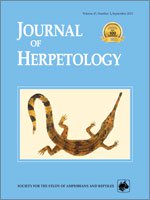Hypothalamic–pituitary–adrenal (HPA, or HPI —interrenal in amphibians) function and the typical stress response system can be altered in many ways. Glucocorticoids (GC) are modulated seasonally in a variety of vertebrate taxa, and long-term captivity also modifies the HPA/I axis. Our experiment investigated the functioning of the HPI axis in free-living and long-term captive Eastern Red-spotted Newts. Free-living newts were collected and blood sampled throughout and after the breeding season in 2006–2007, and 2010. Captive newts arrived in the laboratory in December 2006 and their blood was also sampled in pre-, late-, and postbreeding season in 2007. Contrary to most other amphibians exhibiting seasonality in plasma corticosterone (CORT, the predominant GC in amphibians) levels, the peak in CORT in free-living newts was not related to the breeding season. As expected, captive newts had higher baseline levels of plasma CORT than free-living newts. However, whereas stress-induced CORT levels were equivalent in free-living and captive newts in July (postbreeding), stress-induced concentrations were significantly lower in free-living newts in both January (prebreeding) and April (late breeding). These data suggest that HPI function is altered by captivity in newts.
How to translate text using browser tools
1 September 2013
Seasonal Variation in Corticosterone in Free-Living and Captive Eastern Red-spotted Newts Notophthalmus viridescens viridescens
Nancy J. Berner,
Leslie A. Heil,
L. Michael Romero
ACCESS THE FULL ARTICLE

Journal of Herpetology
Vol. 47 • No. 3
September 2013
Vol. 47 • No. 3
September 2013




